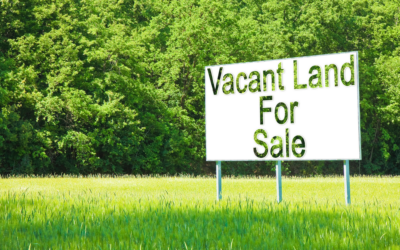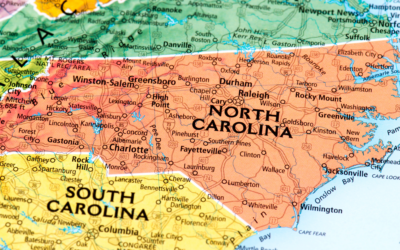Multi-family property investing is one of the oldest types of commercial real estate investing. It is an evergreen trend and with an increasing number of people that are migrating from the suburbs to towns and cities, it is only true that multi-family investing is going to increase furthermore.
If you’re looking at multi-family property investing, we can tell you that it is surely a safe bet. Now, how profitable it is going to turn out to be for you? That depends on a lot of factors put together and is largely influenced by the kind of real estate investment decisions that you would be making.
One such important decisions while investing in the commercial real estate multi-family property are what kind of loan option to choose. With a plethora of loan options that are available in the market and the big list of commercial real estate lenders, it might be difficult to work out the best combination of the perfect loan and the perfect lender for you.
However, since it is a decision that is going to impact both your short term and long term real estate investing success, digging in a little deep and ensuring that you make the right decision is not going to go in vain.
Commercial real estate bridge loans for multi-family property investing have become famous these days as they perfectly fit the bill. Commercial real estate bridge loans are the best go-to financing option when you are looking to bridge the gap between your current financial circumstances and your future one.
To make it simpler to understand, here’s a quick example. Let’s say you are in the middle of a multi-family construction project and you run out of funds to keep the construction process ongoing.
You have a list of tenants who are ready to move into your multi-family property when it’s completed. So, you are essentially now stuck in a situation where you have run out of funds to keep a process ongoing, that after completion will give you great returns. This is a typical case scenario where Commercial Real Estate investors approach commercial real estate bridge loan lenders and avail bridge loans.
In a typical multi-family property context, commercial real estate bridge loans are availed when there are huge repairs and renovations cost coming up, or restructuring of the property is due.
Choosing other more generic loans like hard money loans or Bank Statement Loans might not be the best decision as those loans take longer time to process and the high rates of hard money loans are a huge unnecessary expense that can be avoided by availing commercial real estate bridge loans instead.
Read on to understand the typical terms and conditions of a multi-family bridge loan, advantages and disadvantages of Bridge Loans for Multi-family property, how to get bridge loans for multi-family houses or the qualification standards for a commercial real estate multi-family bridge loan.
How does a typical multi-family bridge loan look like?
- The size of the loan generally starts from 1 million dollars and up. There can be commercial real estate bridge loan lenders who may compromise on this and provide loans for a much smaller size of the loan and that depends on the relationship you build or establish with your lenders. A general loan would start at 1 million dollars.
- The term of the loan would be 6 months to 2 years. An extension to the term is possible where few commercial real estate lenders might have flexible terms.
- Interest rates for multi-family bridge loans largely vary based on the size of the loan, a term of the loan, location of the property, a credit score of the borrower, and the fulfillment of individual lender qualifications. It largely varies subject to tens of conditions and you’ll know about it only when you’ve made an inquiry about it with Commercial Real Estate bridge loan lenders.
- The amortization of commercial real estate bridge loans is generally interest-only. No charges over and above the interest rates are to be covered by the borrowers. Sometimes, there may be prepayment penalties on the loan. It again varies from one lender to another and borrowers must always make a note to enquire about all the possible costs associated with a particular type of financing. No cost associated with a loan should come as a surprise to you.
- The maximum Loan-To-Value Ratio (LTV Ratio) of a typical commercial bridge loan for multi-family housing would range between 70% to 75% of the value of the property. It might go up to 80% too sometimes where the borrower can convince the lender about the same.
Advantages and Disadvantages of Bridge Loans for Multi-family property
Just like any other financing option, commercial bridge loans for multi-family property has its share of pros and cons. Weighing them in the light of your individual and specific financial needs is important to make the final decision of going ahead with the loan. Here are the Advantages and Disadvantages of Bridge Loans for Multi-family property.
Advantages:
- The loan amounts are determined by the total project cost or the completed value of the property and not on the in-place income of the borrower. Although a higher in-place income can indeed help in bringing down the rates of the loan.
- The closing process for these loans does not take a long time and it perfectly fits the bill of making such loans available just at the need of the hour. In case of other types of loans like bank loans or traditional loans, the closing process itself takes a long time, and investors might lose out a lot on the opportunity cost of bearing such time lags.
- Commercial real estate bridge loans are available when other forms of financing in the credit market are locked uptight. In essence, when other forms of financing are not available for whatsoever reasons, commercial real estate multi-family bridge loans can always cover your back.
Disadvantages:
- These loans can be very expensive sometimes. They can especially be highly expensive when the reason for availing such a loan is financial, legal or credit issues. It is also true that the commercial real estate bridge loan lenders tend to hike up the interest rates when they learn that the borrower suffers from poor credit and thus wants to avail of a bridge loan.
- The term of a typical commercial real estate bridge loan for a multi-family property is very short and generally requires to be paid back within 24 months. That’s a very less term for a loan and the opportunity cost of such high interests can be a disadvantage.
How to get bridge loans for multi-family houses?
Here are the qualification standards for a commercial real estate multi-family bridge loan. Note that these standards can largely vary based on the size of the loan and the property value, but in a typical scenario, here’s a list of the documents you will need to submit to avail a commercial real estate bridge loan:
- Last 2 years’ Profit and Loss Statements concerning the multi-family housing property – The Profit and Loss Statements that show a clear distinction of the incomes and expenses that are associated with the property in question is the first thing commercial real estate bridge loan lenders would typically like to investigate.
- Current rent rolls associated with the multi-family housing property – The next thing lenders would like to look into are the current rent rolls that are associated with the property. These rent rolls should be able to paint a clear picture of the existing rental rates of the property, the typical vacancy and occupancy rates of the property, the general nature and income patterns of such tenants and so on. Such details become vital to commercial real estate bridge loan lenders because it provides them a sense of security with the repaying ability of the borrower.
- The personal financial statements of the borrower – The third thing lenders would like to investigate while processing a commercial real estate bridge loan request is the financial statements of the borrower. This again, like the rental rolls, fills lenders with a sense of security with the money lent.
This is a brief list of requirements to qualify for a commercial real estate bridge loan for multi-family housing property. Note that, it is always possible for an investor to avail of a loan even in a case where he or she does not fulfill most requirements.
The simple reason behind is that private Commercial Real Estate bridge loan lenders are open to possibilities and will listen out to the plan you’ve got in place to repay the loan and if you can convince your lender about your repaying ability, you can always avail the loan you want.
So, don’t throw in the towel just yet and try your hands with a bunch of lenders before you look for an alternative financing option.





